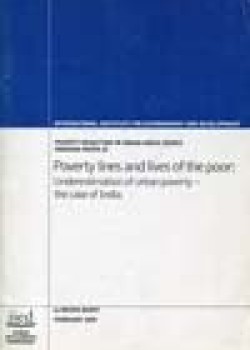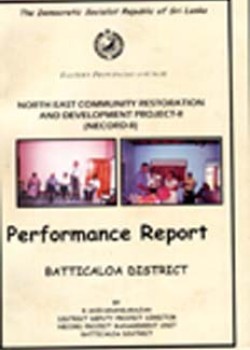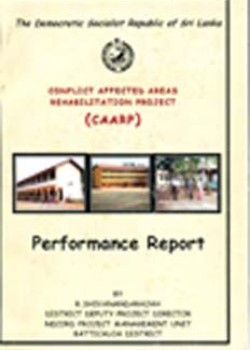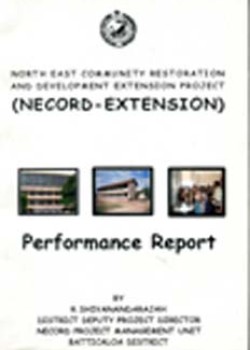
Poverty Lines and Lives of the Poor
Underestimation of urban povert- the case of India
Author : Bapat M.
Publisher: Human Settlements Programme
Place of Publish: United Kingdom, London
Year: 2009
Page Numbers: 53
Acc. No: 4696
Class No: 339.46 BAP-SA
Category: Books & Reports
Subjects: Poverty
Type of Resource: Monograph
Languages: English
ISBN: 978-1-84369-724-4
This paper discusses the development of poverty lines in India, from the 19th century to the present, and assesses their limitations as an indication of poverty. It demonstrates that use of the official poverty line results in considerable underestimation of the extent of urban poverty, and oversimplifies the nature of poverty by disregarding or disguising the reality of the lived experiences of poor people. It then considers the relevance and accuracy of the official poverty line as applied in Pune, a city with around 3 million inhabitants. This highlights the very large gap between the 2 percent of households designated as “poor” by application of the official poverty line in Pune and the 40 percent “living in poor conditions”. The paper also examines the wider nature of poverty and how this has changed over time, using data from a longitudinal study of slum settlements in Pune from 1976 to 2003. Despite Pune,s rapid economic growth, most of the slum households surveyed saw little or no increase in their real income or in improved job opportunities- and little possibility of getting accommodation outside the slums. The paper ends with a discussion on how to achieve a better understanding and measurement of the numerous and interconnected aspects of urban poverty. References: Poverty lines and lives of the poor: Underestimation of urban poverty-the case of India This paper discusses the development of poverty lines in India, from the 19th century to the present, and assesses their limitations as an indication of poverty. It demonstrates that use of the official poverty line results in considerable underestimation of the extent of urban poverty, and oversimplifies the nature of poverty by disregarding or disguising the reality of the lived experiences of poor people. It then considers the relevance and accuracy of the official poverty line as applied in Pune, a city with around 3 million inhabitants. This highlights the very large gap between the 2 percent of households designated as “poor” by application of the official poverty line in Pune and the 40 percent “living in poor conditions”. The paper also examines the wider nature of poverty and how this has changed over time, using data from a longitudinal study of slum settlements in Pune from 1976 to 2003. Despite Pune,s rapid economic growth, most of the slum households surveyed saw little or no increase in their real income or in improved job opportunities- and little possibility of getting accommodation outside the slums. The paper ends with a discussion on how to achieve a better understanding and measurement of the numerous and interconnected aspects of urban poverty. References: Poverty lines and lives of the poor: Underestimation of urban poverty-the case of India This paper discusses the development of poverty lines in India, from the 19th century to the present, and assesses their limitations as an indication of poverty. It demonstrates that use of the official poverty line results in considerable underestimation of the extent of urban poverty, and oversimplifies the nature of poverty by disregarding or disguising the reality of the lived experiences of poor people. It then considers the relevance and accuracy of the official poverty line as applied in Pune, a city with around 3 million inhabitants. This highlights the very large gap between the 2 percent of households designated as “poor” by application of the official poverty line in Pune and the 40 percent “living in poor conditions”. The paper also examines the wider nature of poverty and how this has changed over time, using data from a longitudinal study of slum settlements in Pune from 1976 to 2003. Despite Pune,s rapid economic growth, most of the slum households surveyed saw little or no increase in their real income or in improved job opportunities- and little possibility of getting accommodation outside the slums. The paper ends with a discussion on how to achieve a better understanding and measurement of the numerous and interconnected aspects of urban poverty. References: Poverty lines and lives of the poor: Underestimation of urban poverty-the case of India



